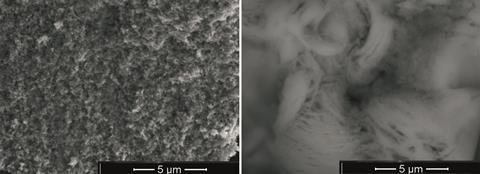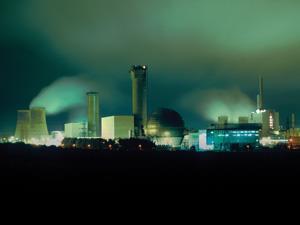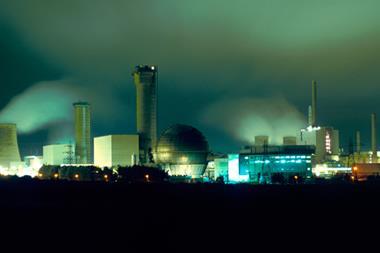Tin nanocomposite mops up nuclear waste contaminant
Scientists have developed a tin-containing material that captures and stores radioactive technetium.

Pertechnetate (99TcO4-) is a splitting product of uranium-235 and plutonium-239 and a radioactive nuclear waste contaminant. Technetium’s 213,000-year-long half-life and pertechnetate’s high solubility in water mean that the radioactive element can contaminate water supplies, enter the food chain and accumulate in animals’ and humans’ vital organs. Cold war activities and the Manhattan Project generated 99Tc in high quantities, and nuclear reactors as well as the Sellafield plant used to release this radioactive contaminant.
Tatiana Levitskaia, Sayandev Chatterjee and their team at the Pacific Northwest National Laboratory, US, have now synthesised a tin-aluminium-phosphate nanocomposite that removes and captures technetium from nuclear waste. The material reduces pertechnetate to the less water soluble Tc(IV), and at the same time changes its structure to capture and retain the reduced technetium.
‘Tin materials have been tested for several years to reduce pertechnetate, but the results are poor as the materials don’t uptake Tc(IV), so it can be reoxidised again,’ says Levitskaia. However, in their new material ‘tin reduces pertechnetate to Tc(IV), which facilitates a change in the material’s structure, immobilising Tc(IV)’, explains Chatterjee. Levitskaia adds that surprisingly, ‘this is only observed when treated with an aqueous solution of pertechnetate, indicating the synergy of this process’.
Xavier Gaona, an expert in actinide and long-lived fission product chemistry at the Karlsruhe Institute of Technology, Germany, thinks that the new material ‘open[s] very promising perspectives for the remediation of these very complex waste streams, defining a clear path for future investigations’.
Scott Oliver, an expert in materials chemistry for environmental applications at the University of California, US, points out that ‘notably, the material is stable to both the high basicity of the waste simulant and the beta emission of 99Tc’.
Levitskaia’s and Chatterjee’s experiments have already shown that the tin material retains the reduced technetium for more than six months. Now they are working on materials that can capture other radioactive waste components. ‘A real breakthrough would be to create one material that can uptake multiple contaminants at one time,’ concludes Levitskaia.
This article was edited for technical accuracy on 08 September 2016. ‘Decay product’ was changed to ’splitting product’, and the text was changed to clarify that the Sellafield plant historically released technetium.
References
This article is free to access until 14 October 2016
T Levitskaia et al, Environ. Sci.: Nano, 2016, DOI: 10.1039/C6EN00130K












No comments yet